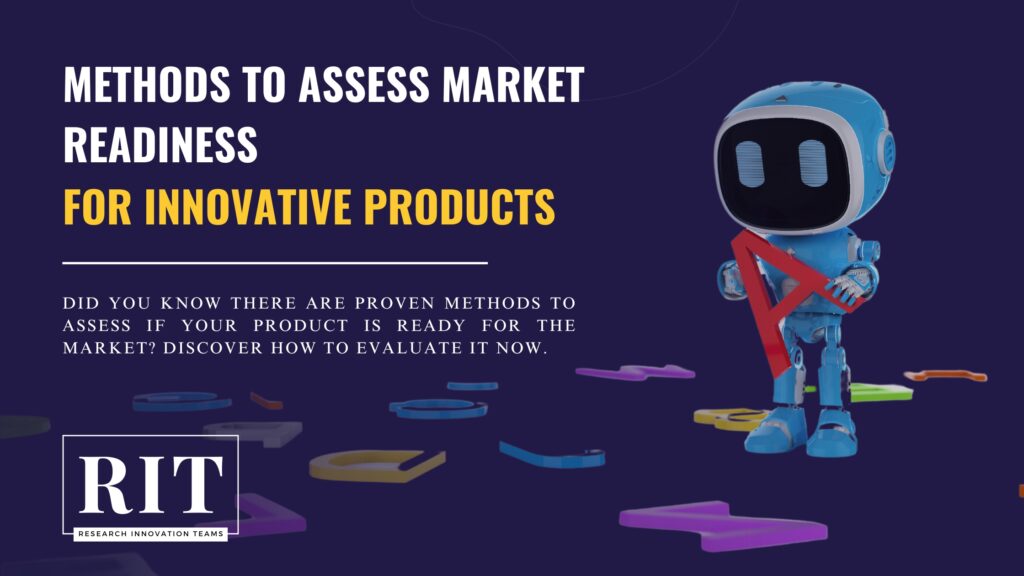Market analysis is one of the most crucial steps in the innovation and commercialization process of inventions. Without a precise understanding of target customers, competitors, and market trends, even the best inventions may fail. Studies show that 42% of startups fail due to a lack of market demand.
For example, the startup Juicero, which designed an innovative juicing machine, failed due to insufficient market demand and inappropriate pricing. On the other hand, Apple conducted extensive research on user needs for multifunctional devices before launching the iPhone, leading to the product’s historic success.
This article explores the importance of market analysis, research methods, and modern tools for market evaluation.
What is Market Analysis, and What Role Does It Play in the Success of an Invention?
Market analysis is a process that examines data related to customers, competitors, and economic conditions to assess the potential success of a new product. This analysis includes examining market demand, industry trends, and competitive advantages.
For example, Dyson conducted extensive research before launching its bagless vacuum cleaners to ensure that customers were willing to pay extra for this innovation. Similarly, in its early years, Netflix studied customer behavior regarding DVD rentals and concluded that a monthly subscription model could be more successful than traditional rental methods. This precise market analysis helped Netflix transition to online streaming, ultimately making it one of the world’s largest entertainment platforms.
The Difference Between Market Analysis and Market Research & the Importance of Each
Market research typically involves collecting data through surveys, interviews, and product testing, while market analysis involves processing and interpreting this data to make informed decisions.
For instance, Tesla conducted surveys before developing the Cybertruck to assess demand for electric trucks, then used market analysis data to determine pricing and marketing strategies. Another example is McDonald’s, which uses market research to evaluate customer interest before introducing a new menu item and then applies market analysis to set pricing and marketing campaigns. Likewise, Amazon analyzes customer purchase data to suggest new products and accurately assess market needs.
Market Research Methods for Innovative Products and New Inventions
There are several methods for conducting market research, including:
- Online Surveys and In-Depth Interviews: This method helps companies gather direct feedback from target customers.
- Minimum Viable Product (MVP) Testing: Creating a basic version of the product to assess customer reactions.
- Historical Data and Industry Trend Analysis: Reviewing past patterns and existing data to predict future market trends.
- Market Testing Through Targeted Advertising: Some companies launch small-scale ad campaigns first to measure customer interest.
- Analyzing Customer Interactions on Social Media: Brands like Glossier have used Instagram interactions to understand customer needs and design products based on direct user feedback.
Identifying Target Customers
Target customers are the group of users who have the highest demand for a product. Tools like Google Analytics and Facebook Audience Insights help businesses gather precise information on the age, interests, and needs of potential customers. For example:
- Nike used customer analytics to personalize product recommendations, increasing its online sales by 30%.
- Netflix analyzes customer behavior to recommend tailored movies and TV shows, which has boosted its user retention rate to 80%.
- According to Statista, companies that base their marketing strategies on deep customer insights achieve 75% higher conversion rates.
The Role of Competitor Analysis in Marketing and Sales Strategy Development
Competitor analysis involves studying pricing, product features, marketing strategies, and strengths and weaknesses of competitors. This helps companies identify opportunities for improvement and competitive advantages. For instance:
- Apple conducted an in-depth analysis of the smartphone market before launching the iPhone, discovering that users wanted multifunctional devices with a simpler interface. This led to the design of the iPhone, which replaced button-based phones and revolutionized the market.
- Samsung analyzed Apple’s strategies and invested in larger displays and customization features for its Galaxy series, allowing it to capture a significant share of the smartphone market.
- Pepsi, to compete with Coca-Cola, leveraged market data to focus on younger generations and innovative advertising. Successful campaigns like the “Pepsi Challenge” significantly increased brand popularity.
Modern Tools and Techniques for Market Analysis
Modern market analysis relies on advanced tools and data-driven techniques. This process includes big data examination, predictive algorithms, and market trend analysis. These modern approaches enable companies to make more strategic decisions, better understand customer needs, and enhance their competitiveness. Some of the most important tools and methods include:
1. Google Trends
This tool allows businesses to track search trends, helping them gain insights into market movements and changes in user preferences. It provides data on keyword search volume, regional comparisons, and seasonal trends.
Benefits of Google Trends:
- Identifies increases or decreases in user interest in a particular product or industry.
- Detects seasonal shifts in market demand.
- Compares search trends across different geographic regions.
- Finds relevant keywords for SEO optimization and digital advertising.
Google Trends is a free and user-friendly tool, making it one of the best data analysis solutions for both startups and large enterprises.
2. Big Data & AI Analytics
Companies use big data analysis and artificial intelligence to predict customer behavior, optimize business processes, and improve efficiency. These technologies help businesses process massive amounts of data and identify customer behavior patterns.
Benefits of Big Data & AI Analytics:
- Predicting Customer Behavior: Analyzing user data helps companies better understand customer needs and preferences.
- Personalizing Customer Experience: AI algorithms provide customized recommendations for each user.
- Enhancing Operational Efficiency: Companies can optimize processes and reduce costs.
- Fraud Detection & Data Security: Analyzing unusual behavioral patterns can help identify suspicious activities and prevent fraud.
Big Data and AI Analytics are widely used not only in e-commerce and technology, but also in finance, healthcare, manufacturing, and transportation, helping businesses make smarter decisions.
3. Customer Relationship Management (CRM) Systems
CRM platforms like Salesforce help businesses collect, analyze, and manage customer data, improving marketing strategies and personalizing customer experiences.
Benefits of CRM Systems:
- Customer Data Analysis: Businesses can examine purchase history, interaction records, and behavioral patterns.
- Improving Customer Loyalty: Offering special promotions and rewards programs encourages repeat purchases.
- Enhancing Sales Team Efficiency: CRM tools help track customer interactions and convert potential leads into buyers.
- Integrating Communication Channels: CRM systems enable businesses to manage customer interactions through email, online chat, phone, and social media.
4. Social Media Analytics
Companies use tools like Sprout Social, Hootsuite, and Brandwatch to analyze user behavior on social media and manage their digital strategies. These tools help businesses identify emerging trends, evaluate content performance, and measure customer engagement.
Benefits of Social Media Analytics:
- Understanding Customer Behavior: Tracking likes, comments, and shares reveals what type of content customers prefer.
- Identifying Market Trends: Brands can discover popular industry trends and use them for content creation and product development.
- Brand Reputation Management: Monitoring social media allows companies to respond to feedback and enhance their brand credibility.
- Optimizing Marketing Strategies: Social media data helps businesses decide on content types, advertising strategies, and customer engagement approaches.
- Competitor Analysis: Brands can assess their competitors’ social media strategies and identify areas for improvement.
Social media analytics enables businesses to engage more effectively with customers and continuously improve their marketing campaigns in the competitive digital space.
5. A/B Testing & Market Experiments
Social media analytics enables businesses to engage more effectively with customers and continuously improve their marketing campaigns in the competitive digital space.
Many businesses use A/B testing to optimize marketing strategies, improve user experience, and enhance conversion rates. This method involves running different versions of an element (e.g., a landing page, ad, or user interface) on separate user segments and comparing results to determine the best option.
Benefits of A/B Testing:
- Improving Conversion Rates: Helps businesses identify changes that increase user engagement and purchases.
- Reducing Guesswork: Decisions are based on real data rather than assumptions.
- Optimizing Advertisements: Assists brands in choosing the best ad copy, images, and designs.
- Enhancing User Interface Efficiency: Improves website and app usability by testing different design elements.
A/B Testing helps businesses minimize risks associated with sudden changes and make data-driven decisions that contribute to sustainable marketing growth.
By using these tools, companies can identify emerging market trends, evaluate the impact of changes, and enhance their competitiveness. Additionally, businesses can better understand their strengths and weaknesses, execute more effective advertising campaigns, and improve their return on investment (ROI).
Common Mistakes in Market Analysis and How to Avoid Them
1. Relying on Assumptions Instead of Real Data
Many businesses make decisions based on assumptions rather than analyzing real data, which can lead to product failure. For example, Segway assumed that personal transportation would undergo a revolution, but without sufficient market research, their product received little market adoption.
Solution: Conduct market research, surveys, and data analysis to validate assumptions before product development.
2. Ignoring Competitors and Misjudging Market Position
Some companies enter the market assuming their product has no competition, which can be a critical mistake. BlackBerry is an example of this error, as it failed to recognize the rapid growth of touchscreen smartphones and lost its market share.
Solution: Continuously analyze competitors using tools like SWOT analysis and benchmarking to understand strengths and weaknesses relative to competitors.
3. Failing to Update Information with Market Changes
Markets are constantly evolving, and outdated information cannot guide new decisions. Kodak ignored the rise of digital photography, missing the opportunity to enter the digital camera market, which ultimately led to its bankruptcy.
Solution: Monitor market trends regularly using tools like Google Trends and industry reports to quickly adapt to changes.
4. Ignoring Customer Feedback
Companies sometimes launch products without considering actual customer needs. For example, in the 1980s, New Coke was introduced but failed due to poor customer reception, forcing Coca-Cola to bring back the original formula.
Solution: Conduct market tests such as MVP (Minimum Viable Product) and A/B Testing to gather direct user feedback and refine products accordingly.
5. Misinterpreting Market Trends
A poor understanding of market changes can lead to investment in the wrong areas. For instance, Yahoo overlooked the opportunity to acquire Google, eventually losing its market dominance.
Solution: Use AI-driven analytics and data mining to accurately predict market trends and make data-driven decisions.
Conclusion
Market analysis is one of the most critical factors in the success of new inventions and innovations. Many innovative ideas, despite having high potential, fail due to a lack of proper assessment of market needs and customer behavior. Therefore, a precise understanding of market demand, consumer preferences, and competitive conditions is essential to ensure the success of an invention. Companies that have effectively utilized market analysis have been able to develop products aligned with real customer needs and avoid costly failures.
Utilizing various market research methods, such as surveys, historical data analysis, MVP testing, and customer behavior monitoring on social media, can provide valuable insights into the target market. Market research should not be seen as an optional step in the innovation process but rather as an integral part of business strategy.
Additionally, competitor analysis plays a crucial role in developing successful strategies. Examining competitor performance, identifying their strengths and weaknesses, and comparing similar products enable businesses to properly define their competitive advantages and establish a stronger market position. Companies that have ignored competitor analysis often struggle to survive in highly competitive markets. Therefore, combining market and competitor analysis can help create sustainable value for customers and increase the success rate of innovations.
Finally, the use of modern data analysis tools such as Big Data, Artificial Intelligence (AI), and Customer Relationship Management (CRM) systems has allowed businesses to collect extensive information on customer behavior and make more precise decisions. The business world is evolving rapidly, and only companies that continuously monitor the market and make data-driven decisions can remain competitive. Therefore, any inventor or entrepreneur aiming for long-term success must consider market analysis as a fundamental pillar of product development.





